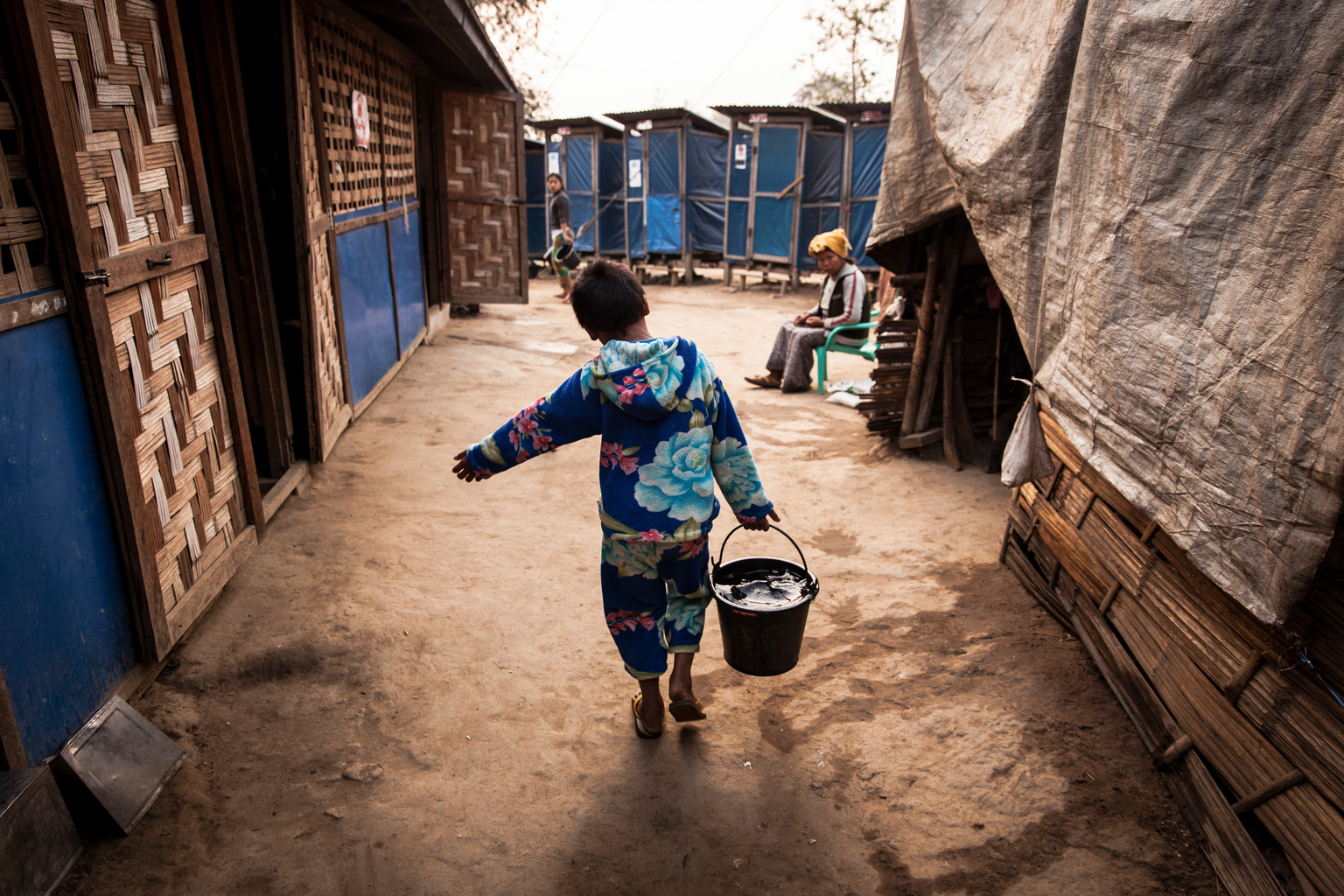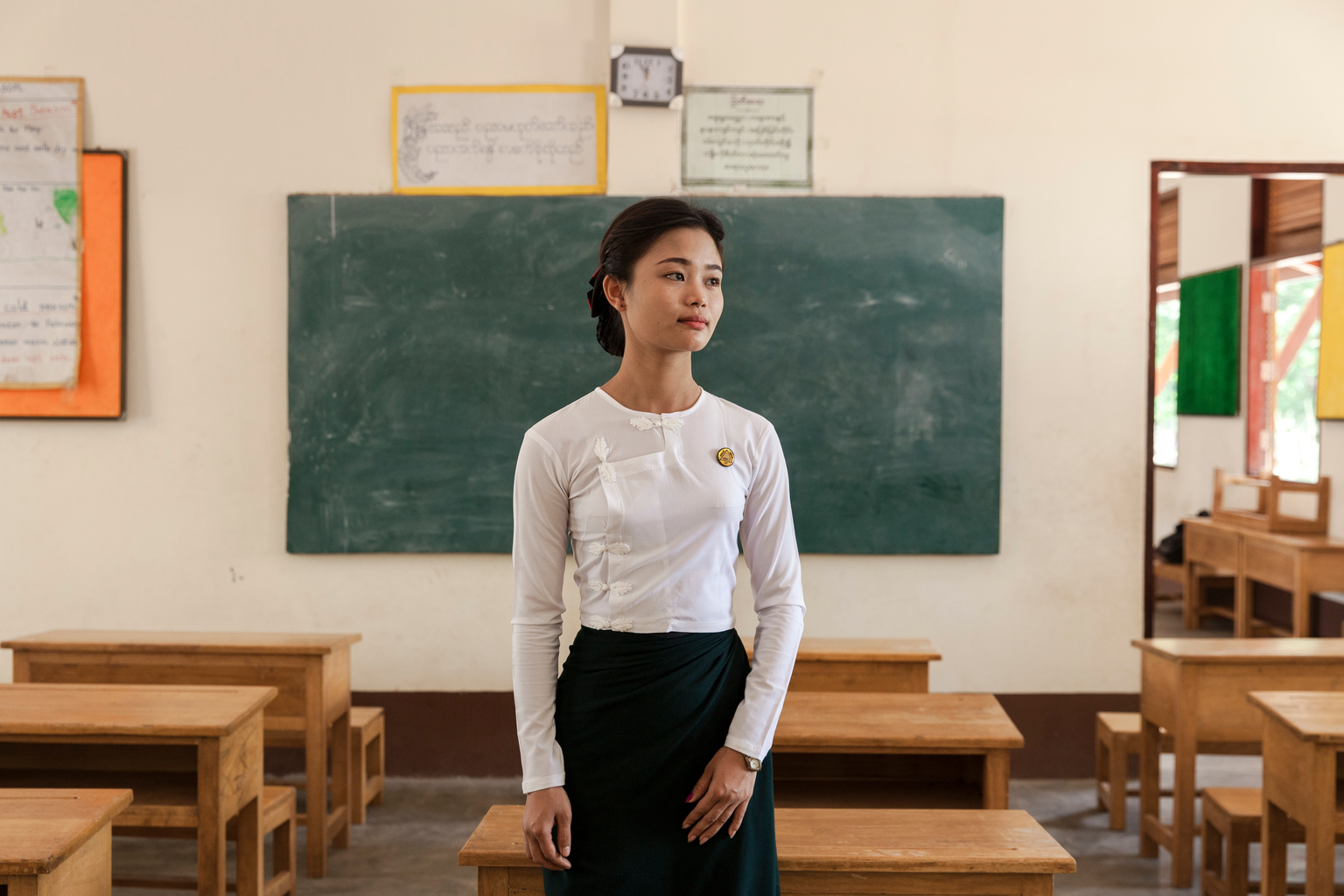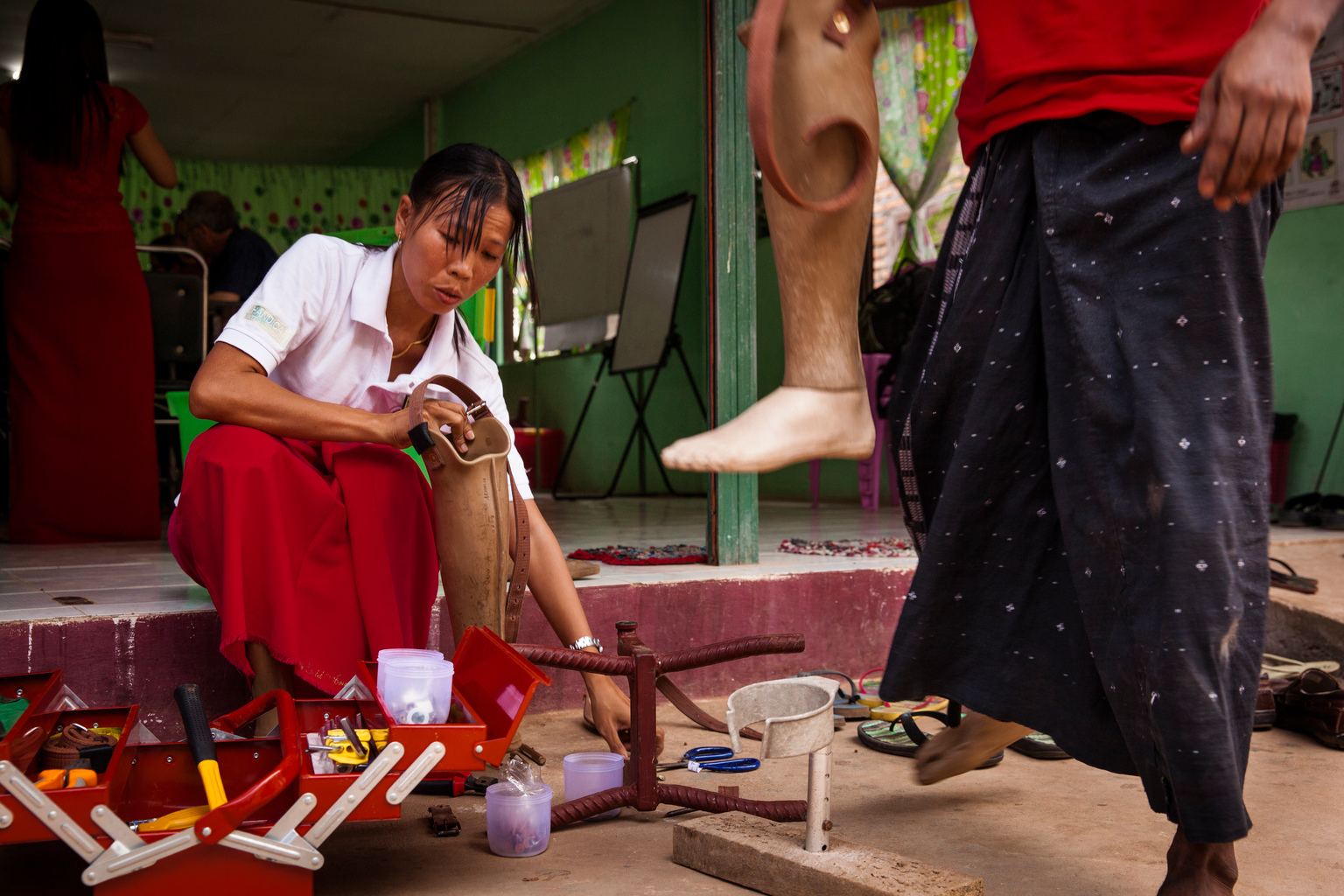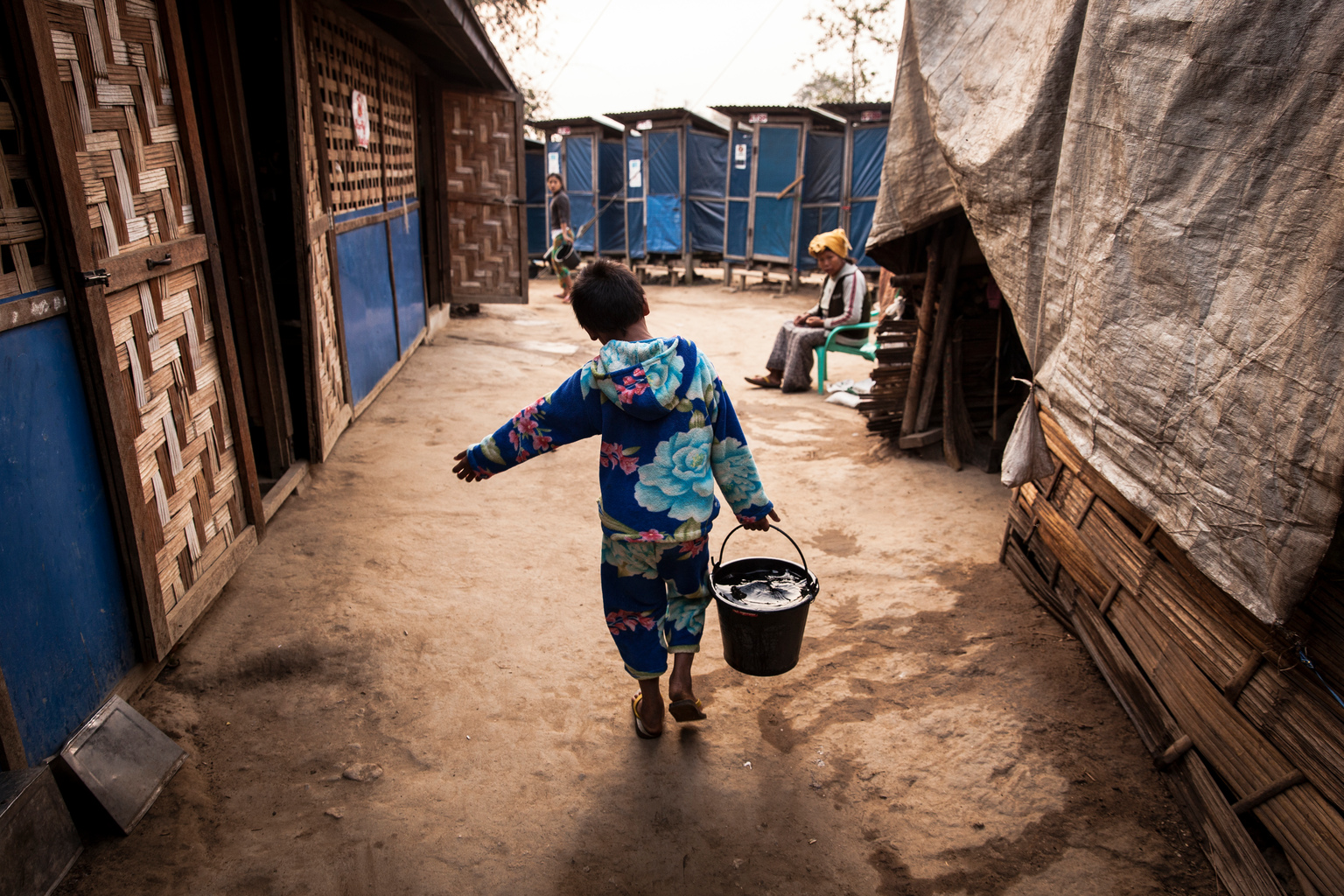© UNICEF/UN059873/Zar Mon
缅甸藏有地雷和未引爆的弹药,令儿童每天面临受伤或死亡的威胁
缅甸14个州与地区中,有9个州的土地受现在和以往战争遗留下来的地雷和爆炸物污染。缅甸是全世界地雷意外率最高的国家之一。根据缅甸「地雷风险工作组」的资料显示,平均三天就有一人因地雷受害,每三名受害者中就有一名是儿童。
危机四伏
2017-06-19
© UNICEF/UN059873/Zar Mon 缅甸藏有地雷和未引爆的弹药,令儿童每天面临受伤或死亡的威胁 缅甸14个州与地区中,有9个州的土地受现在和以往战争遗留下来的地雷和爆炸物污染。缅甸是全世界地雷意外率最高的国家之一。根据缅甸「地雷风险工作组」的资料显示,平均三天就有一人因地雷受害,每三名受害者中就有一名是儿童。

于克钦邦八莫市的潘哈尔科内国内流离失所者(Phan Khar Kone IDP)营地,12岁的昂丁正前往洗澡。2013年,克钦独立军(KIA)与缅甸军队爆发战争,昂丁的父亲放牧时在爆炸中丧生,很可能踩中地雷被炸死。

10岁的闽.西亚(Min Thiya)展示身上的大疤痕。两年前,他和朋友在克伦邦安卡劳(Ann Ka Law)村的树林玩耍时,发现未爆炸弹药並留下伤痕。爆炸导致两名男童死亡及4人受伤,包括他最好的朋友苏巴孙。

南莫莫基(Nan Maw Maw Kyi)老师说:「我们总是告诉孩子:如果你在森林发现奇怪或不寻常的东西,永远不要碰它,应告诉成人。」南莫莫基是最先目睹爆炸现场的其中一员,唤醒人们记起那场持续60多年的冲突。

9岁的苏巴孙是闽.西亚最好的朋友,她说:「那个东西好像很沉重,金属也很热。不知甚麽原因总觉得这个东西很危险。」苏巴孙也在爆炸中受伤了。
数周前爆发冲突遗留未爆炸药,怀疑事故因此发生。

新创立的康復中心位于克钦邦密支。图右为42岁的昂索闵(Aung Soe Min),坐在他旁边的是33岁的道加(Daung Ja),装有新的义肢。闵是政府军人,在扫雷时受伤。加为克钦独立军工作,在铺设地雷时受伤。

33岁的珊珊茉(San San Maw)13岁时因踩到地雷失去了右腿。她目前在克伦邦高克雷由联合国儿童基金会支助的地雷受害者援助中心当义工,她也在那里修理义肢。缅甸大约有500万名人在藏有地雷的地区生活。

缅甸持续的暴力行动继续影响居住在冲突地区和活动于藏有地雷地区的儿童。如果不再努力实现社会和平和增强社会凝聚力,将会再次出现更多像昂丁一样的受害者。